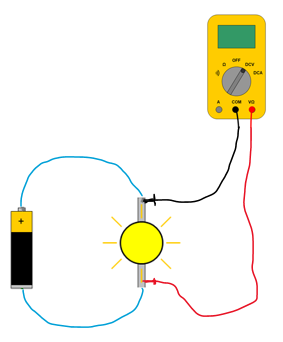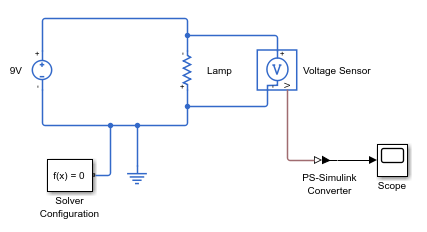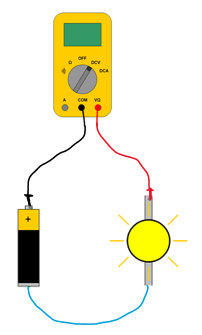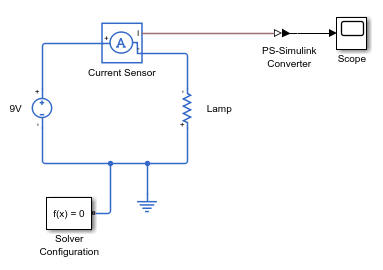Through and Across Variables
According to the physical network approach, models are represented as systems of connected functional elements that interact with each other by exchanging energy through their ports. For more information, see Basic Principles of Modeling Physical Networks.
An energy flow is characterized by its variables; usually, by a pair of variables whose product is power, in watts. These variables are domain-specific, such as current and voltage for an electrical domain, force and velocity for a mechanical domain, or flow rate and pressure for a fluid domain. Some domains, such as moist air, require additional variables to characterize their energy flows. The physical network approach supports two types of variables:
Across — Variables that are defined by measuring a difference, or drop, across an element. Examples of such variables are voltage (for an electrical domain) or pressure (for a fluid domain). You measure them with a sensor connected in parallel to the element.
Through — Variables that are considered as being transmitted through an element unchanged. Examples of such variables are current (for an electrical domain) or flow rate (for a fluid domain). You measure them with a sensor connected in series with the element.
For example, consider an electrical circuit consisting of a battery connected to an incandescent lamp:
To measure the voltage across the lamp, connect the multimeter in parallel. Voltage is an Across variable.


To measure the current through the circuit, connect the multimeter in series. Current is a Through variable.

